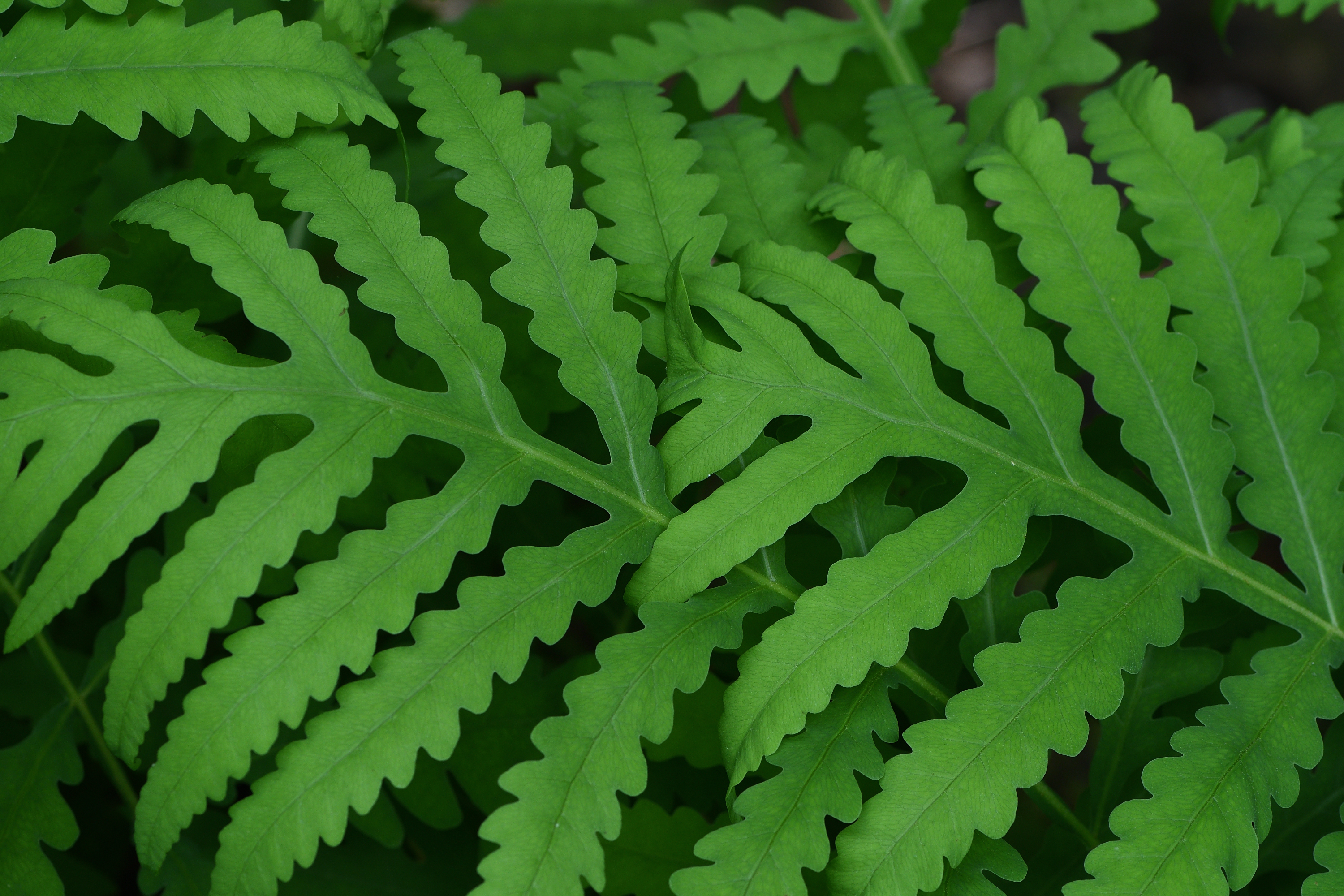Sensitive fern
(Onoclea sensibilis)

Description
Onoclea sensibilis, the sensitive fern, also known as the bead fern, is a coarse-textured, medium to large-sized deciduous perennial fern. The name comes from its sensitivity to frost, the fronds dying quickly when first touched by it. It is sometimes treated as the only species in Onoclea, but some authors do not consider the genus monotypic. The sterile and fertile fronds of Onoclea sensibilis have independent stalks originating from the same rhizome, quite different from other ferns. The bright, yellow-green sterile fronds are deeply pinnatifid and are typically borne at intervals along the creeping rhizome. The sterile fronds are deciduous with trophopods, swollen bases, that serve as over winter storage organs. The sterile fronds of O. var. sensibilis have a length of 1-1.3 m (3-4 ft) with 5-11 pinnae, leaf pairs, evenly spaced along the stipe. O. var. interrupta Maxim. fronds are shorter, 20-50 cm (8-20 in) long, with fewer pinnae, only 5-8 pairs. The fertile fronds are smaller, 20-45 cm (8-18 in) in length, non-green at maturity and have very narrow pinnae. They are persistent, standing 2–3 years. The sori comprise clusters of sporangia (spore cases) 2–4 mm (1/10-1/6 in) in diameter, like beads, on upright fertile fronds, hence the common name Bead fern. Sori are typically bilaterally symmetrical, though leaf forms have been observed with pinnae fertile only on a single side of the rachis, a variation not meriting taxonomic recognition (J. M. Beitel et al. 1981). The fiddleheads have a pale reddish color. Onoclea sensibilis is native to Northern Hemisphere temperate regions; the Russian Far East, China and Eastern Asia, and a wide native distribution in Northern America. It ranges from Newfoundland south to Florida and west to Texas, the Rocky Mountains, North and South Dakota, Quebec, and Manitoba. It has become naturalized in western Europe and New Zealand. Onoclea sensibilis can be found at elevations from sea level up to 1,500 metres (4,900 ft) in fresh water habitats, not brackish, as it's spore germination ceases at NaCl levels ≥ 0.6%, moderately saline water and higher. Onoclea sensibilis grows best in moist shaded or partially shaded areas, dwelling in a variety of swamp and wood habitats: wet meadows, thickets and bogs, as well as stream and riverbanks and roadside ditches. It tolerates extremely wet soils, appearing in soggy ground or at the very edge of water in shade or sun. The plant can tolerate dryer conditions in shade.
Taxonomic tree:







